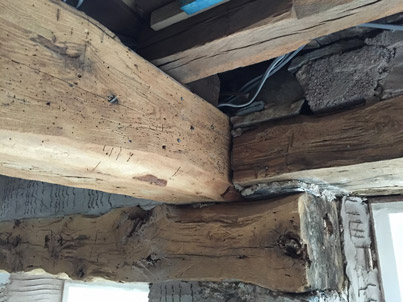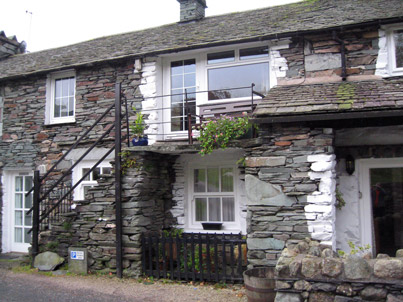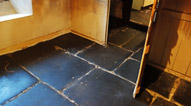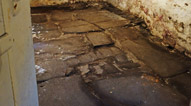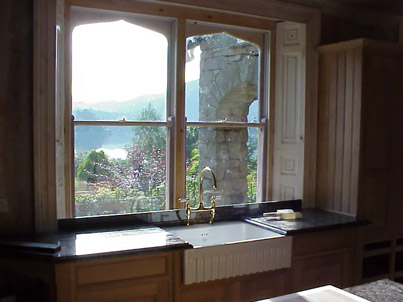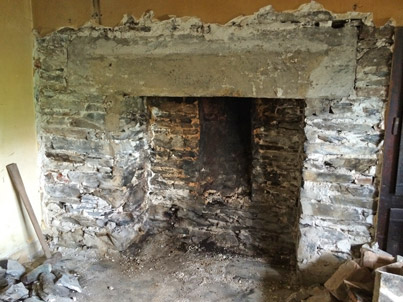Renovations
Cottage renovations continue to be popular but business renovations are also important for local contractors
From simple makeovers to complete remodelling, renovations are the principal type of work for local builders
Not Only Cottages

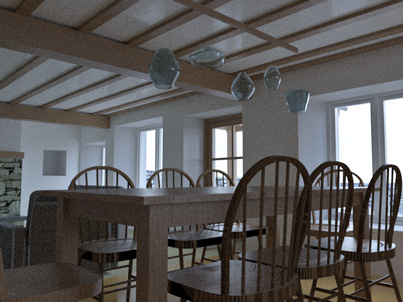
Cottage and barn remodelling near Hawkshead - computer rendering to illustrate lighting options in dining area
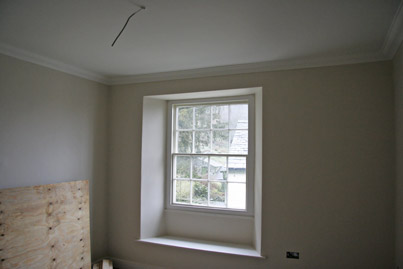
Window seats are still very popular - the thinned area of stone wall below the window sill can give damp problems. The tapered reveals (scuntions) can similarly suffer with rain penetration.
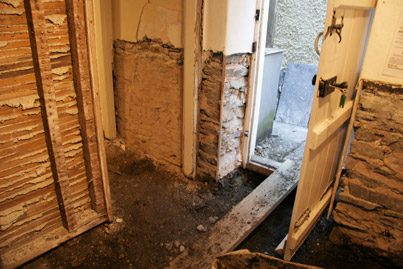
What is under the flagged floor of a cottage - damp earth. Here the walls have had plaster removed in preparation for a waterproof render coat and replastering - a technique still liked by local builders but no longer allowed on Listed Buildings where only lime plaster or a drained membrane to a sump approach is normally permitted. Slatestone does not absorb water of course and so this is much debated locally.
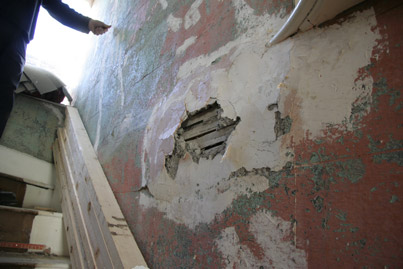
Removing old wallpaper on lath and plaster walls and partitions normally leaves areas that need patching in before redecoration. Look carefully and you can see the faint ruled lines in the plaster which was used to give a sort of masonry look to plaster walls
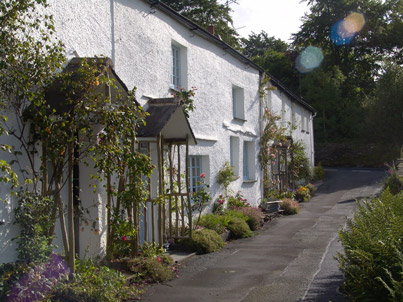
One of the problems is access for the builder - this row isn't the worst access in the area by any means
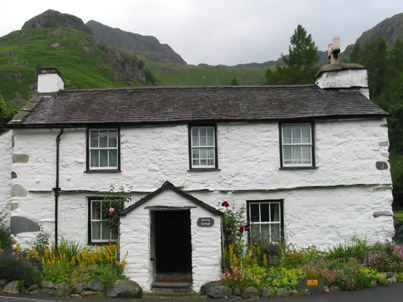
Many cottages started out as barns and were converted into dwellings in past centuries then later improved by succeeding generations. The heavy chimney here suggests considerable age and the sash windows suggest much later improvement
Renovation of Properties
Slate Flagged Floors - pros and cons
Slate flagged floors come in many varieties and have been around so long that you can find them in unimproved cottages covered by asphalt or some other damp resisting treatment, or even a thin layer of concrete if you are unlucky.
In this area a blue/black stone has been commonly used for floors (and window sills and steps) for hundreds of years. Often referred to as 'Brathay Blue' after the quarry outside Ambleside (near the Drunken Duck Inn) but I am not sure if all of it actually originated there. Burlington Slate still work this quarry at times.
This local blue slate is not so good for roofing and so was used for floors, where clogs and tackets in boots would wear the edges somewhat over many years producing smooth edges.
If you want to see the best quality riven blue stone floor flags - large, rectangular and even stones - then Hill Top (NT) associated with Beatrix Potter has some nice examples still.
The average cottage would not have anything quite as smart and work rooms would be paved even more irregularly (see the two images just above).
Slate floors in dairy rooms and cellars (and damp cottages) often show a white deposit around the joints between flags. This is salt left behind when the moisture has evaporated. It is likely that for such rooms it was damp on purpose. In very old farm houses I have seen a slate 'box' set into the flagged floor in a basement which holds water and the level never varies summer or winter (the trick seems to be worked by linking it to a well not too distant).
Visitors with properties in the area often seek to recreate this smooth slightly glossy look when re-laying old flag floors, using a proprietary sealer but it needs constant reapplication tending to wear on the uneven surface's high points within 12 months.
The repeated application has a yellowing effect on the floor where a thickness builds up.
I tend to seek advice on the current state of availability of stone from local builders as it does vary a lot. Not much riving gets done now and the quarries tend to saw blocks and then roughen the surface with either high pressure water jet or a flame jet treatment. This has the advantage of looking like a riven slate finish but being level and so tables and chairs do not need their legs packing up.
The cost of locally produced slate is such that many clients now use ceramic tiles (not bad actually) or imported stone (variable quality and appearance) for floors and patio paving.
Sawn slate tiles at about 1/2" or 12 mm thick can look stunning if laid by an expert tiler but the choice of stone is also important and the best local builders spend a lot of time sourcing the right stone. There are a few very small independent quarries still operating who cater for this trade.
To lay real old flags - typically after lifting, excavating the subfloor, possibly underpinning the stone walls (footings seldom went down very far), insulating the floor and installing underfloor heating - takes considerable skill as the stones can be very uneven on both sides. Normally you need a decent depth of mortar to fully bed them on. It is easy to spot a floor where this has happened as the new joints are wider than the original open joints.
Many cottages were improved in past decades by removing flags and concreting the floors - if you look in the garden or patio you will often see blue flag stones that once were inside.
Don't confuse this with the appalling 'crazy paving' very prevalent in the area for patios (often just laid on sand and thus prone to lifting due to frost). I am not sure if local people who had access to masses of irregular green stone for free started this habit or whether it was a fashionable finish once upon a time.
A problem with using old flags outside for paving - and the smoother the flag the worse the problem - is that our local wet climate causes a slime to develop on such surfaces quite quickly and it renders the otherwise non-slip surface almost frictionless.
I see many male visitors happily playing for hours with a power washer (which does the paving no favours) when all it needs is a dilute solution of a fungicidal wash thrown on - as used by decorators to clean roughcast before painting. I am told that the boat hire firm in Bowness-on-Windermere uses a bio-degradable anti-slime product on their boat hulls which is ideal.
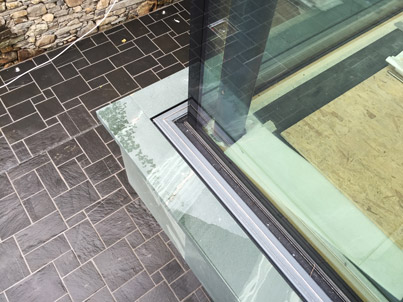
Modern local slate paving and sills - balcony edge to house above Grasmere and patio paving below all by Paul Dixon Ltd
Site Map
|
Planning Maze
|
|
Trade Gadgets
CDM2015
|
|


William Sutherland rias riba
Chartered Architect
Director
Cluan, Rydal Road, Ambleside LA22 9BA
Tel: 015394 34489
